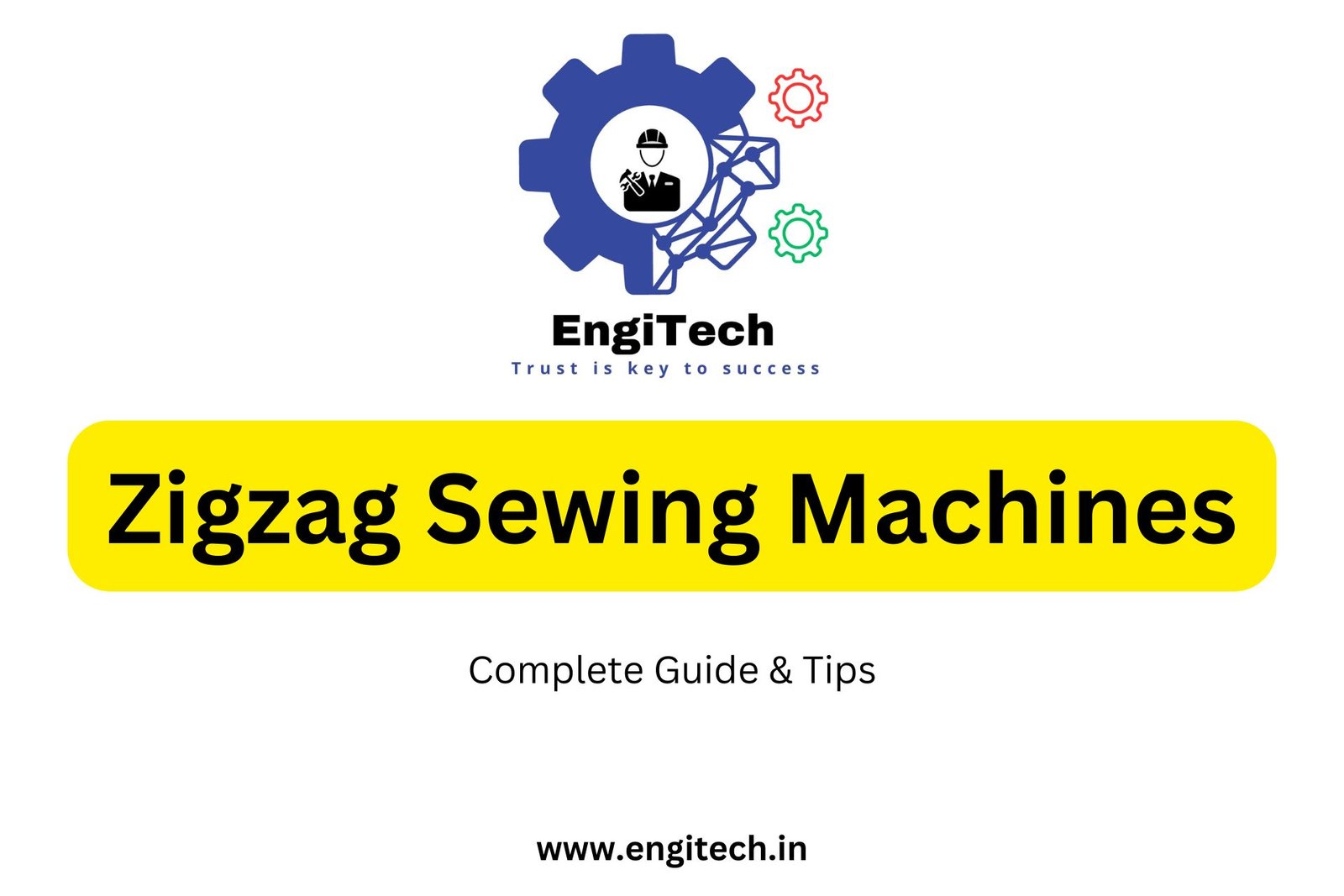Zigzag Sewing Machines: A Comprehensive Guide for Knowledge Seekers, Students, and Working Professionals

Zigzag sewing machines have been a cornerstone of garment construction and design for decades. Known for their versatility and precision, these machines are invaluable in both professional and domestic sewing environments. Whether you’re a student learning the basics of sewing, a professional tailor, or an engineer involved in the design and maintenance of sewing machinery, understanding the functionality, applications, and benefits of zigzag sewing machines is crucial.
In this blog post, we’ll delve into the intricacies of zigzag sewing machines, exploring their features, applications, maintenance tips, and much more. By the end of this article, you will have a comprehensive understanding of zigzag sewing machines, making you well-equipped to utilize them to their fullest potential.
Table of Contents
What is a Zigzag Sewing Machine?
A zigzag sewing machine is a type of sewing machine that can create zigzag stitches in addition to straight stitches. The zigzag stitch is formed by the needle moving from side to side as it penetrates the fabric, creating a zigzag pattern. This stitch is highly versatile and is commonly used for tasks such as sewing elastic fabrics, reinforcing buttonholes, and decorative stitching.
Key Features of Zigzag Sewing Machines
Zigzag sewing machines come equipped with a variety of features that set them apart from standard straight-stitch machines. Some of the key features include:
- Adjustable Stitch Width: Zigzag sewing machines allow users to adjust the width of the zigzag stitch. This feature is essential for customizing stitches based on the fabric type and the specific sewing task.
- Multiple Stitch Patterns: In addition to the zigzag stitch, these machines often offer a variety of other stitch patterns, including decorative stitches, blind hems, and stretch stitches.
- Automatic Thread Tension Control: To ensure even stitches, many zigzag sewing machines feature automatic thread tension control, which adjusts the tension based on the fabric thickness and stitch type.
- Speed Control: Many zigzag sewing machines offer adjustable speed settings, allowing users to sew at a comfortable pace, whether they are working on intricate designs or simple seams.
- Free Arm Capability: The free arm feature is ideal for sewing cylindrical items like sleeves and pant legs, offering greater flexibility and ease of use.
Types of Zigzag Sewing Machines
Zigzag sewing machines can be broadly classified into two categories:
- Mechanical Zigzag Sewing Machines: These machines are operated manually, with stitch selection and adjustments made using dials and levers. They are typically more affordable and easier to maintain, making them ideal for beginners and hobbyists.
- Electronic Zigzag Sewing Machines: These machines feature electronic controls and often include advanced features such as programmable stitch patterns, automatic needle threading, and LCD displays. They are more versatile and efficient, catering to the needs of professionals and experienced sewists.
Applications of Zigzag Sewing Machines
Zigzag sewing machines are incredibly versatile and can be used for a wide range of applications. Some of the most common uses include:
Sewing Elastic Fabrics
Elastic fabrics, such as spandex and knitwear, require a stitch that can stretch with the fabric without breaking. The zigzag stitch is ideal for this purpose, as it can expand and contract along with the fabric, ensuring a durable and flexible seam.
Reinforcing Buttonholes
Zigzag sewing machines are commonly used to reinforce buttonholes. The zigzag stitch strengthens the edges of the buttonhole, preventing fraying and ensuring that the fabric can withstand repeated use of the button.
Decorative Stitching
Beyond functional stitching, zigzag sewing machines are also widely used for decorative purposes. The zigzag stitch can be adjusted in width and length to create intricate patterns on fabric, adding a unique touch to garments, home decor items, and more.
Appliqué and Embellishment
Zigzag sewing machines are perfect for appliqué work, where fabric pieces are sewn onto a larger fabric surface. The zigzag stitch securely attaches the appliqué while adding a decorative edge. This technique is popular in quilting and garment embellishment.
Repair and Alterations
Whether you’re repairing a tear in a garment or altering a piece to fit better, zigzag sewing machines offer the flexibility needed to handle a variety of fabrics and stitching requirements. The ability to adjust stitch width and length makes these machines ideal for precision work.
How to Use a Zigzag Sewing Machine
Using a zigzag sewing machine may seem daunting at first, but with practice and the right guidance, it becomes an intuitive process. Below is a step-by-step guide to help you get started:
Step 1: Set Up the Machine
Begin by setting up your zigzag sewing machine on a stable surface. Ensure that the machine is properly threaded, with the bobbin wound and inserted correctly. Adjust the thread tension and stitch settings based on the fabric you are working with.
Step 2: Select the Zigzag Stitch
Using the stitch selector dial or electronic interface, choose the zigzag stitch. Most machines allow you to adjust the stitch width and length, so take the time to customize these settings according to your project needs.
Step 3: Position the Fabric
Place the fabric under the presser foot, ensuring that it is aligned properly. Lower the presser foot to hold the fabric in place.
Step 4: Begin Sewing
Start sewing at a slow pace, guiding the fabric gently with your hands. As you gain confidence, you can increase the sewing speed. Remember to keep an eye on the stitch width and length to ensure consistent results.
Step 5: Finishing the Stitch
Once you have completed the stitching, raise the needle and presser foot, and carefully remove the fabric from the machine. Trim any excess threads and inspect the stitching for any imperfections.
Expert Tips for Using Zigzag Sewing Machines
- Test Stitches on Scrap Fabric: Before starting your project, test the zigzag stitch on a piece of scrap fabric to ensure that the settings are correct.
- Use the Right Needle: Depending on the fabric type, use the appropriate needle size and type to avoid skipped stitches or damage to the fabric.
- Regular Maintenance: Keep your machine in top condition by regularly cleaning the bobbin case, changing the needle, and oiling the machine as recommended by the manufacturer.
Troubleshooting Common Issues with Zigzag Sewing Machines
Even with the best machines, issues can sometimes arise. Here are some common problems with zigzag sewing machines and how to troubleshoot them:
Skipped Stitches
Skipped stitches can occur if the needle is dull, bent, or not inserted correctly. Replace the needle with a new one, ensuring that it is inserted properly. Additionally, check the thread tension and adjust it if necessary.
Uneven Stitches
Uneven stitches may result from incorrect thread tension or improper fabric handling. Make sure that the fabric is fed evenly through the machine and that the thread tension is appropriately set for the fabric type.
Fabric Puckering
Fabric puckering is often caused by excessive tension or using the wrong needle size. Reduce the tension slightly and switch to a finer needle to achieve smoother stitches.
Thread Breakage
If the thread keeps breaking, check for any obstructions or rough edges in the thread path. Also, ensure that the thread is of good quality and that the machine is correctly threaded.
Maintenance and Care of Zigzag Sewing Machines
Proper maintenance is key to extending the lifespan of your zigzag sewing machine and ensuring optimal performance. Here are some maintenance tips:
Regular Cleaning
Dust and lint can accumulate in the bobbin case and feed dogs, leading to poor stitch quality. Clean these areas regularly using a small brush or compressed air. Be sure to follow the manufacturer’s guidelines for cleaning and maintenance.
Oiling the Machine
Some parts of the zigzag sewing machine require lubrication to function smoothly. Consult the user manual to identify these parts and apply sewing machine oil as needed. Avoid over-oiling, as excess oil can attract dust and lint.
Replacing Needles
Needles should be replaced regularly, especially if you notice signs of wear such as skipped stitches or fabric damage. A dull or bent needle can cause significant issues, so it’s best to replace it after every project or after 8 hours of continuous sewing.
Professional Servicing
For long-term maintenance, it’s advisable to have your zigzag sewing machine professionally serviced once a year. A technician can check for any internal issues, adjust the timing, and ensure that the machine is in perfect working order.
Expert Insights on Zigzag Sewing Machines
Our engineering experts emphasize the importance of understanding the mechanics behind zigzag sewing machines. Unlike straight-stitch machines, zigzag sewing machines require precise timing and synchronization between the needle and feed dogs to produce consistent stitches. This precision is what allows the machine to handle a variety of fabrics, from delicate silks to heavy denims, with ease.
Another key insight is the role of thread tension in achieving perfect zigzag stitches. According to our experts, even slight variations in tension can result in skipped stitches, uneven seams, or puckering. Therefore, it’s essential to adjust the tension settings according to the fabric type and thickness.
Moreover, our experts recommend investing in a high-quality zigzag sewing machine if you plan to use it frequently. While budget models may suffice for occasional use, professional-grade machines offer better durability, more features, and superior stitch quality. Brands such as Singer, Brother, and Janome are known for their reliable zigzag sewing machines, catering to both beginners and professionals.
Conclusion: Why Zigzag Sewing Machines are a Must-Have
Zigzag sewing machines are an essential tool for anyone involved in garment construction, alterations, or decorative stitching. Their versatility, combined with ease of use, makes them suitable for a wide range of applications, from simple repairs to complex design projects. Whether you’re a student learning the basics, a professional tailor, or a hobbyist, a zigzag sewing machine can significantly enhance your sewing capabilities.
By following the tips and guidelines outlined in this article, you can maximize the potential of your zigzag sewing machine, ensuring that you achieve professional-quality results every time. From selecting the right machine to mastering stitch techniques, we’ve covered everything you need to know to get started and succeed in your sewing endeavors.
Remember, a well-maintained zigzag sewing machine is not just a tool, but an investment in your craft. Take care of your machine, and it will take care of your sewing needs for years to come.
FAQs related to zigzag sewing machines:
1. What is a zigzag sewing machine, and how does it differ from a straight-stitch machine?
- Answer: A zigzag sewing machine can sew stitches in a zigzag pattern, while a straight-stitch machine only sews in a straight line. The zigzag stitch is more versatile, allowing for tasks like sewing elastic fabrics, reinforcing buttonholes, and decorative stitching.
2. What are the benefits of using a zigzag sewing machine?
- Answer: Zigzag sewing machines offer versatility in stitch patterns, adjustable stitch width, and the ability to sew on a wide range of fabrics, including stretch fabrics. They are also useful for decorative stitching, appliqué, and fabric repairs.
3. Can a zigzag sewing machine sew straight stitches as well?
- Answer: Yes, most zigzag sewing machines can also sew straight stitches. Users can switch between stitch types depending on the requirements of their project.
4. How do I adjust the stitch width on a zigzag sewing machine?
- Answer: Most zigzag sewing machines have a dial or electronic setting that allows you to adjust the stitch width. You can make the stitch narrower or wider depending on your needs. Refer to your machine’s manual for specific instructions.
5. Why is my zigzag stitch not forming properly?
- Answer: Common issues with zigzag stitches include incorrect thread tension, a dull or bent needle, or improper threading. Check these areas and make the necessary adjustments to resolve the problem.
6. What type of needle should I use for zigzag stitching?
- Answer: The needle type depends on the fabric you are sewing. For general sewing, a universal needle works well. For stretch fabrics, a ballpoint needle is recommended. Always match the needle size and type to the fabric to avoid skipped stitches or fabric damage.
7. How do I maintain my zigzag sewing machine?
- Answer: Regular maintenance includes cleaning the bobbin case and feed dogs, oiling the machine as per the manufacturer’s instructions, replacing the needle regularly, and having the machine serviced by a professional annually.
8. Can I use a zigzag sewing machine for quilting?
- Answer: Yes, zigzag sewing machines can be used for quilting, especially for attaching appliqué pieces and creating decorative quilt patterns. However, a walking foot may be required for better fabric control.
9. Is a zigzag sewing machine suitable for beginners?
- Answer: Absolutely. Many zigzag sewing machines are beginner-friendly, offering straightforward operation with adjustable settings that allow new sewists to learn and grow their skills over time.
10. What is the difference between mechanical and electronic zigzag sewing machines?
- Answer: Mechanical zigzag sewing machines are manually operated with dials and levers, making them simpler and more affordable. Electronic machines offer advanced features such as programmable stitches, automatic threading, and LCD displays, providing greater convenience and versatility.
11. How do I prevent fabric puckering when using a zigzag stitch?
- Answer: To prevent puckering, reduce the thread tension, use the correct needle for your fabric, and ensure the fabric is fed smoothly through the machine. You may also need to adjust the stitch length and width settings.
12. Can I sew denim or heavy fabrics with a zigzag sewing machine?
- Answer: Yes, you can sew denim and other heavy fabrics with a zigzag sewing machine. However, it’s important to use a heavy-duty needle, adjust the stitch settings appropriately, and ensure the machine is capable of handling thick materials.
13. What are some common problems with zigzag sewing machines, and how can I fix them?
- Answer: Common issues include skipped stitches, uneven stitches, thread breakage, and fabric puckering. These can often be resolved by adjusting thread tension, using the correct needle, ensuring proper threading, and maintaining the machine regularly.
14. How do I sew a buttonhole with a zigzag sewing machine?
- Answer: Many zigzag sewing machines come with a buttonhole stitch option. To sew a buttonhole, select the appropriate stitch, adjust the stitch width and length, and follow the machine’s instructions to create a reinforced and precise buttonhole.
15. Which brands make the best zigzag sewing machines?
- Answer: Popular brands known for quality zigzag sewing machines include Singer, Brother, Janome, and Bernina. Each brand offers models suited for different skill levels and budgets, so it’s important to choose a machine that fits your specific needs.
From EngiTech Team
EngiTech is dedicated to empowering engineers, students, and professionals with in-depth knowledge and cutting-edge insights into industrial mechanical engineering. From detailed guides on advanced machinery like zigzag sewing machines to expert analyses of the latest technological innovations, our content is crafted to help you excel in your field. Whether you’re seeking to enhance your expertise or stay ahead of industry trends, EngiTech is your go-to resource for reliable, high-quality information. Join our growing community and take your engineering skills to the next level with content that’s not just informative but truly transformative.


